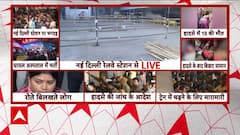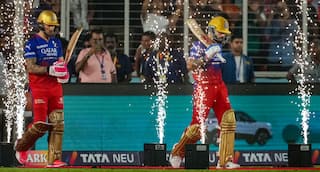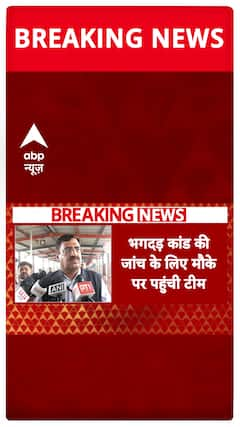Ranil Wickremesinghe Back As Sri Lankan Prime Minister. Know More About The Veteran Politician
During his initial stints as Sri Lanka’s Prime Minister, Wickremesinghe had to tackle insurgency led by Liberation Tigers of Tamil Elam (LTTE).

New Delhi: Amid the ongoing economic crisis in the island nation, Sri Lanka’s former prime minister Ranil Wickremesinghe was sworn-in as the next premier on Thursday evening. Wickremesinghe, the leader of the United National Party since 1994, succeeds Mahinda Rajapaksa, who resigned as the Prime Minister earlier on Monday. The development comes as Sri Lanka Podujana Peramuna (SLPP), led by Rajapaksa, has reportedly extended its support to Wickremesinghe so that he could command a majority in the Parliament. The veteran Sri Lankan politician had earlier served as the Prime Minister from 1993 to 1994, 2001 to 2004, 2015 to 2018 and 2018 to 2019.
During his initial stints as Sri Lanka’s Prime Minister, Wickremesinghe had to tackle insurgency led by Liberation Tigers of Tamil Elam (LTTE).
He, however, tried to find a solution to the ethnic problem through peace talks rather than by use of brute force.
He also served as Leader of the Opposition from 1994 to 2001 and from 2004 to 2015.
On returning to power in 2015, he took up a number of development projects and also tried to repair the country’s relation with the international community.
Wickremesinghe, born in a politically influential Buddhist Sinhalese family, joined politics while he was still a university student.
Wickremesinghe joined the United National Party and progressed through its ranks. He was appointed as the chief organiser of the Kelaniya Electorate in the mid-1970s but was later appointed as the chief organizer of the Biyagama Electorate, which he won in the 1977 parliamentary elections.
He was appointed Deputy Minister of Foreign Affairs in the new government of J. R. Jayewardene and was soon promoted to the post of Minister of Youth Affairs and Employment, which made him the youngest cabinet minister of Sri Lanka.
During his term as deputy minister, he initiated the Sri Lanka National Guard and the National Youth Services Council (NYSCO), which provides vocational and career training to school leavers.
Wickremesinghe, a lawyer by profession, was later made the Minister of Education.
Under the presidency of Ranasinghe Premadasa, Wickremesinghe was appointed as the Minister of Industry under which he initiated industrial reforms and established the Biyagama Special Economic Zone.
Wickremesinghe had competition from his senior colleagues in the UNP, Lalith Athulathmudali and Gamini Dissanayake, who had been rivals of President Premadasa.
He was appointed the Leader of the House in 1989.
Wickremesinghe was sworn-in as the Prime Minister on May 7, 1993, after President Premadasa was assassinated by the Tamil Tigers and Prime Minister D. B. Wijetunga was appointed the President.
During his term, he was credited for pushing the country through an impressive economic transformation and was generally backed by the business community.
In the 1994 parliamentary elections, the UNP lost to Chandrika Bandaranaike Kumaratunga's People's Alliance (PA).
After the loss in the 1999 presidential elections, Wickremesinghe unsuccessfully led his party in the 2000 parliamentary elections, again losing out to the PA.
In the 2001 parliamentary elections, the UNF, led by Wickremesinghe, won 109 seats and PA was able to obtain only 77 seats. Consequently, he was able to form a new UNF government and sworn as the 17th Prime Minister on December 9, 2001.
Trending News
Top Headlines











































